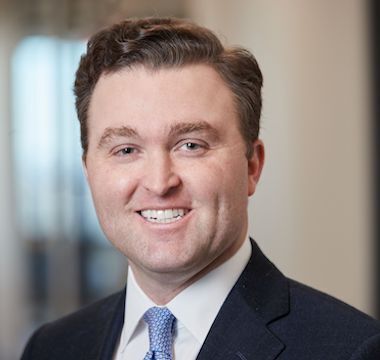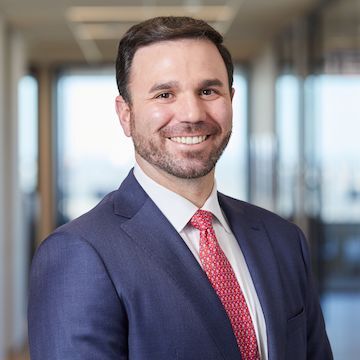The economics of the U.S. commercial insurance market have been leading larger carriers away from providing highly customized coverages. Several recent drivers – notably cybersecurity, climate patterns and COVID-19 – appear to have accelerated that trend. As a result, companies in sectors as diverse as construction, healthcare and finance are exploring single parent captive programs to meet their risk management needs. The captive insurance market has proven to be an increasingly viable alternative to traditional lines of insurance in 2021, and is poised to continue growing throughout 2022.
But first, what is captive insurance?
A captive is a risk financing mechanism that takes the form of an insurance company owned and controlled by its insureds, which may be its parent company or a group of related companies. Some captives, for example, are owned by a single parent (also known as “pure” captives), and write coverage only for that single parent, while others may be owned by, and underwrite risks for, an association or an industry group. In some cases, the captives are owned by a party unrelated to the insured, but who “rents” the captive’s surplus to a firm wishing to set up a self-insurance program.
The control that the formation and ownership of a captive affords the parent company can be useful by allowing the tailoring of insurance coverage to meet the unique risks of the parent, particularly in cases where coverage might otherwise be unavailable or prohibitively expensive. Additionally, captives can provide potential financial benefit because of the insurance tax treatment, which may prove integral to the captive’s longevity and profitability. Captives should only be formed as an alternative method to fund retained losses and should only retain a comfortable level of risk and volatility.
Whereas captives were once almost exclusively domiciled in the Caymans and Bermuda, as of 2020 more than 3,100 captives were domiciled in the U.S., with Vermont, Utah, Delaware and North Carolina accounting for nearly half of that figure, according to A.M. Best.1 Since 2000, U.S. captives have topped traditional commercial insurers in operating performance, A.M. Best found, in part due to the perception by companies in need of insurance that underwriters overprice the company’s risks and fail to understand their business model.
MARKET FACTORS
Industry consolidation, more restrictive policies, and rising premiums among traditional commercial insurance providers have been the main market drivers making captive insurance more attractive for a growing number of companies.
Prior to 1980, many top-rated carriers often wrote customized commercial insurance policies that companies could obtain with relative ease. This availability dwindled considerably during the market crisis of the mid-1980s, a situation that the federal Liability Risk Retention Act of 1986 (LRRA) was intended to alleviate.2 Yet middle market companies still struggled to receive property and casualty coverage for their unique risks.
The hardening of the commercial market during the past several years has further contributed to the difficulty of traditional platforms providing tailored insurance solutions. Between 2011 and 2020, net premiums written in the U.S. P&C insurance industry rose by over 47%, from $446.6 billion to $658.3 billion.
Average premium rate changes for commercial P&C insurance went from falling by 5.4% in 4Q 2010 to rising by 8.9% in 3Q 2021, and increasing for a 16th consecutive quarter, according to the Council of Insurance Agents & Brokers (CIAB).3 Multiple factors led to the increases over the last decade, but the primary drivers are 1) predictive analytics and digitized underwriting and 2) an increase in loss activity, namely natural disasters.
TREND DRIVERS
Pressure on the insurance market is expected to continue, according to Stephens Analyst John Campbell.4 Material weather events, service outages and disruptions, as well as data breaches have the potential to impact insurance businesses, Campbell noted.5 These drivers, along with the pandemic, have been especially influential on business decisions to establish captive programs in the last few years.
Cybersecurity
- Last year, Stephens Insurance worked with multiple companies that filed ransomware claims, ranging from $200,000 to $3 million per claim. In 2021, some of the largest and most sophisticated businesses in the world became victims of cybersecurity breaches.
- Although the total cost of cybercrime is unknown, largely due to the reluctance of companies to share such details, a 2020 McAfee report estimated that figure to exceed $1 trillion globally.6 As a result, insurers have implemented extremely rigorous criteria that companies must pass in order to get basic cybersecurity coverage.
- According to Airmic, for some insureds, premium rates have soared by over 400% in 2021.7 Specific to Stephens Insurance clients, premium rates have averaged a 40% increase year-over-year. Based on market trends and inbound client requests at Stephens, it appears that captives will become a necessary source of taking on more cyber risk financing through participation in higher retentions and additional limit capacity.
Climate Patterns
- Unpredictable hurricanes, floods, and convective storms are emerging as property development ramps up in areas that have experienced rapid population bursts. This exposes companies operating in those locations to greater potential risks.
- The World Economic Forum Global Risks Report 2021 ranks climate and extreme weather as the most likely and impactful dangers to stability.8
The previous year’s report noted that insurance protection gaps are rampant, businesses in coastal areas vulnerable to flooding are seeking ways to lower insurance costs, and that more extreme weather could make insurance too costly for many businesses.9
COVID-19
- Prior to the 2019 onset of coronavirus, pandemic coverage received relatively little attention from insurers and insured companies. Preexisting commercial policies that did include pandemic coverage typically lacked coverage for business interruptions due to pandemics, Ernst & Young found.10
- The Organisation for Economic Cooperation and Development (OECD) estimated that nearly all pandemic-related losses would fall upon policyholders that do not receive direct government assistance. Companies that require people to work in close proximity — those in manufacturing, food and retail, for example — have been especially at risk.11
- In court, many U.S. property insurers have won legal contests, upholding an insurer’s denial of claims for payment of lost business income during
government-mandated shutdowns.12 Given that the COVID-19 pandemic is still ongoing, and that a different one may occur in the future, companies are
turning to alternative risk management solutions, including captives, to meet this fast evolving need. The Stephens Captive team has seen an increase in
client and prospect discussions around pandemic and non-physical damage business interruption coverages, which were unavailable to most businesses.
NOTABLE SECTORS
Family Offices
These holding businesses often have various assets, including uniquely structured business entities such as certain real estate firms, each of which may be fully staffed and managed by distinct leadership teams. It is common for a family office, which is similar to but structurally different from a private equity firm, to struggle to find sufficient traditional insurance covering the precise operations of each of its business entities. The heads of family offices are beginning
to discover how captive programs can solve for those insurance gaps, as well as how multigenerational considerations also may benefit from highly customized risk management solutions.
Construction
Captive insurance has been around in the construction industry for quite some time. With most construction companies, the need to address and manage third-party risks, such as those related to subcontractors, is essential. For safety-conscious, best-in class risk management focused construction companies, captives can provide a cost-effective approach around owner-controlled programs (OCIP), contractor-controlled insurance programs (CCIP), construction defect and rework exposures.
Healthcare
Assisted living and nursing homes may require enhanced professional and malpractice coverage, for protection against class-action lawsuits. The high-profile nature of such cases, and the huge payouts to plaintiffs that can arise, have limited the number of traditional insurers underwriting such policies. The pandemic also has contributed to added scrutiny of conditions that those at greater health risk of contracting COVID-19 might face at assisted living and
nursing homes. Therefore these kinds of healthcare companies are accessing captive insurance in self-funded or group programs.
Architects & Engineers
The engineering sector is changing rapidly because of pressure to build projects quicker and at lower cost, while adapting to the effects of extreme weather. Municipalities nationwide rely on facilities to provide sewer and water treatment, but struggle to find experts who can operate them properly. Municipal engineers are increasingly being asked to design, build, operate, own, finance and manage wastewater facilities. This brings new risks their current insurance
policies do not address. Some municipal engineers are self-funding captive programs to fit their needs before taking on this type of project.
FORWARD VIEW
In the years ahead, certain commercial insurance markets may stabilize, and the potential for changes to federal income tax rules could alter how companies approach self-funded captive programs. But, the overall evolution of the commercial insurance market is constant, and we expect the market to remain restrictive and expensive. The Stephens Captive team believes that companies will continue to seek alternative solutions to traditional coverage, and the challenges of obtaining bespoke insurance coverage will continue to make the captive model advantageous. Due to these forces and the expansion of captive
coverage capabilities, we believe that captive insurance will continue to experience further growth.
About the Experts



- https://www.ambest.com/captive/captivereviewbook.pdf
- https://content.naic.org/sites/default/files/publication-ris-bb-risk-retention-handbook.pdf
- https://www.ciab.com/download/32268/
- https://www.stephens.com/ServePDF.ashx?pdf=160274.pdf&id=135456&html=true
- https://www.stephens.com/ServePDF.ashx?pdf=159872.pdf&id=135173&html=true
- https://ir.mcafee.com/news-releases/news-release-details/new-mcafee-report-estimates-global-cybercrime-losses-exceed-1
- https://www.airmic.com/news/press/harsh-market-focus-cyber
- https://www3.weforum.org/docs/WEF_The_Global_Risks_Report_2021.pdf
- https://www3.weforum.org/docs/WEF_Global_Risk_Report_2020.pdf
- https://assets.ey.com/content/dam/ey-sites/ey-com/en_us/topics/bbbc/ey-managing-captive-insurance-in-covid-19-world.pdf
- https://www.oecd.org/coronavirus/policy-responses/responding-to-the-covid-19-and-pandemic-protection-gap-in-insurance-35e74736/
- https://www.wsj.com/articles/captive-insurance-seen-as-covid-era-remedy-to-rising-premiums-11601208001
- This article was prepared for informative purposes only and is not an offer to buy or sell any securities. It does not purport to be a complete description of the securities, markets or developments referred to in the article or to include all information needed to evaluate any transaction. Information contained in the article was derived from sources considered reliable, but has not been independently confirmed or verified. The opinions expressed are the personal opinions of the author. These opinions do not necessarily reflect the opinions of any other person or entity, and they are subject to change without notice. Data referenced in this document is derived from data sources cited herein (collectively “Data Providers”). Data Providers do not guarantee the accuracy, adequacy, completeness or availability of any content provided and are not responsible for any errors or omissions, regardless of the cause or for the results obtained from the use of such content. In no event shall the Data Providers or Stephens be liable for any damages, costs, expenses, legal fees or losses in connection with any use of the data included in this document.
- Stephens Insurance, an affiliate of Stephens Inc., is headquartered in Little Rock, Arkansas and is one of the largest privately owned insurance brokerages in the United States. There are currently more than 170 associates throughout Stephens Insurance’s network of offices in Birmingham, Fayetteville, Houston, and Jackson. Stephens Insurance National Producer #8844362